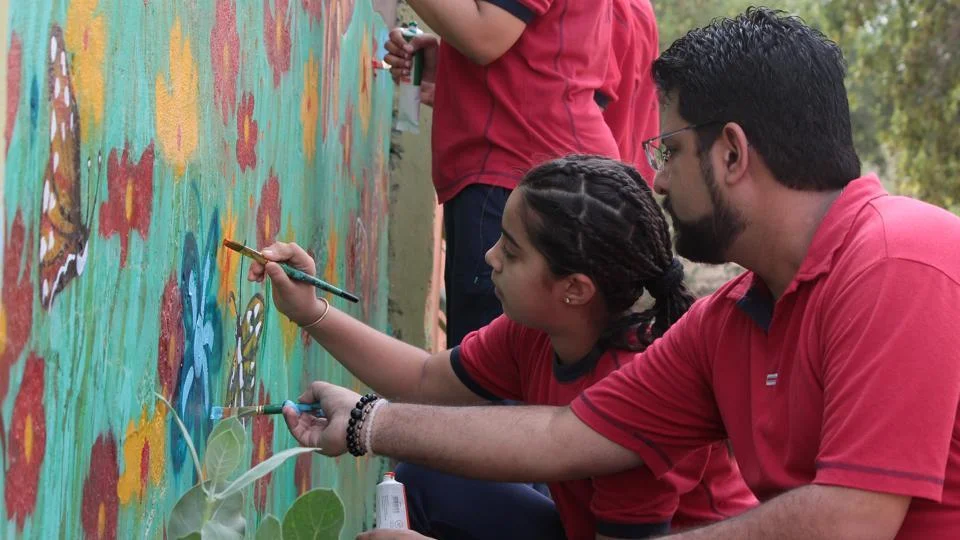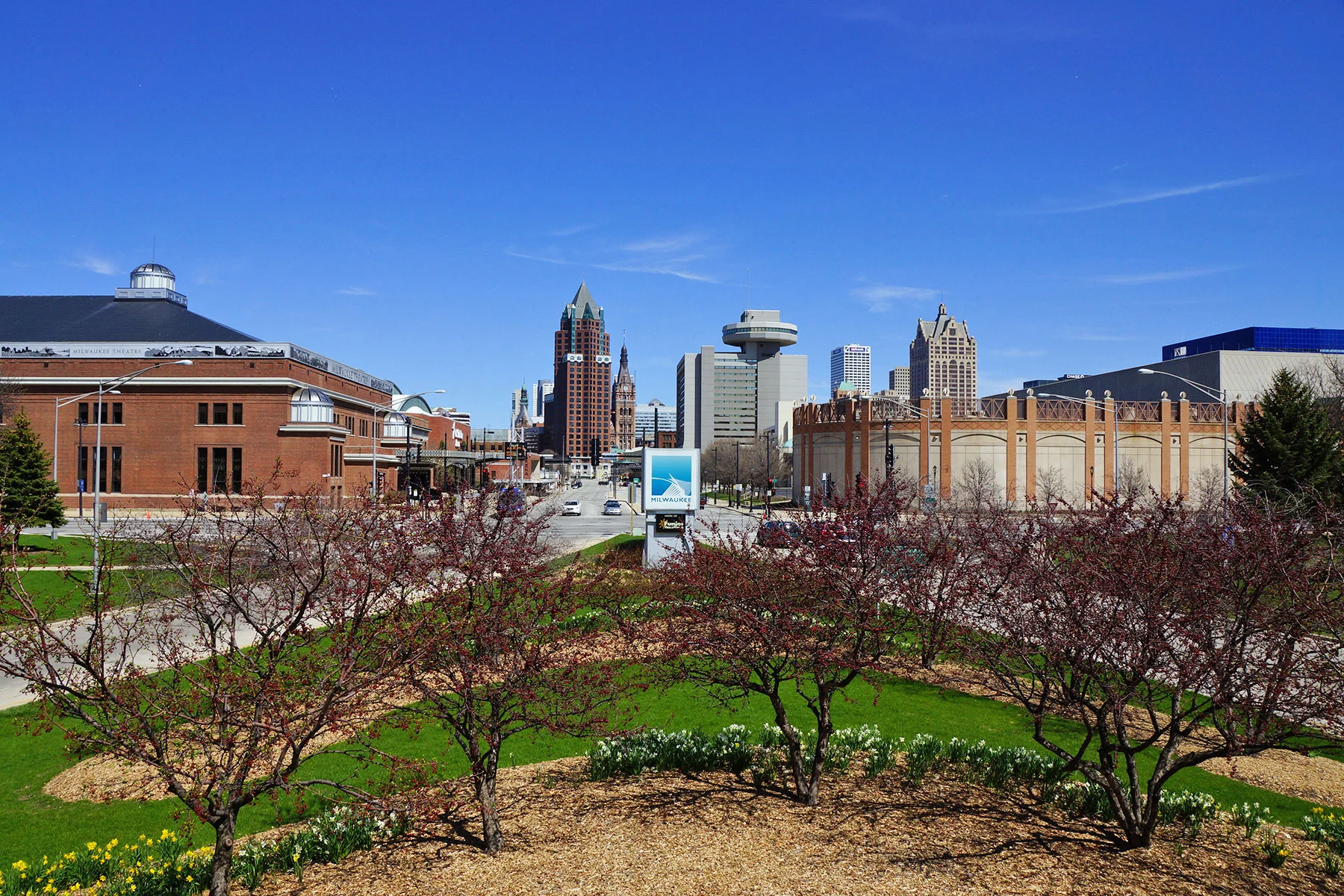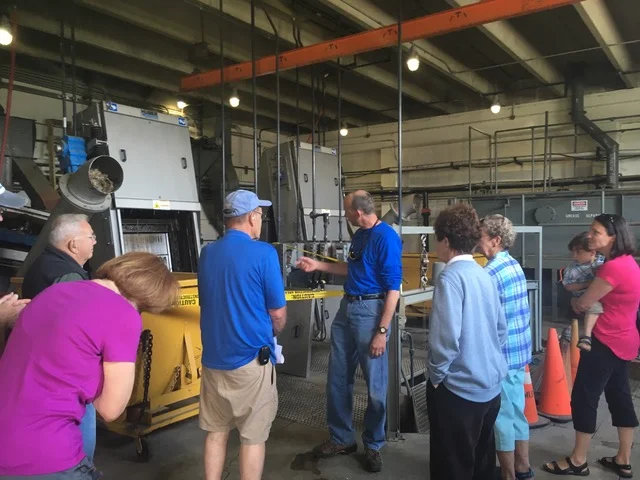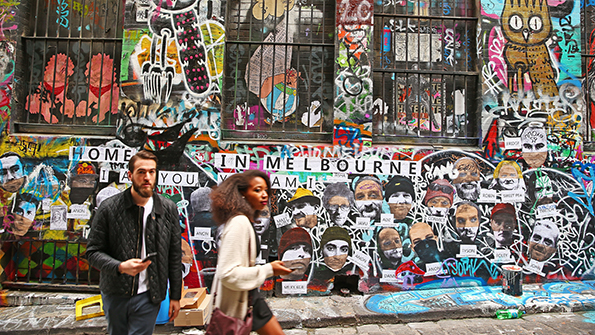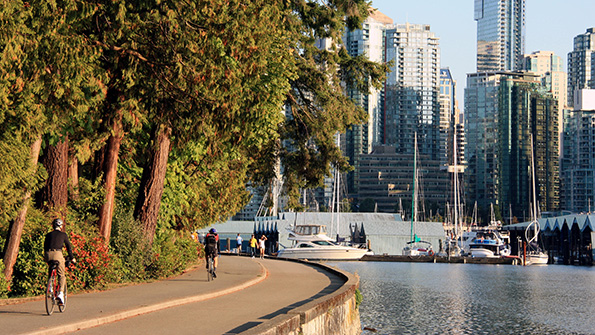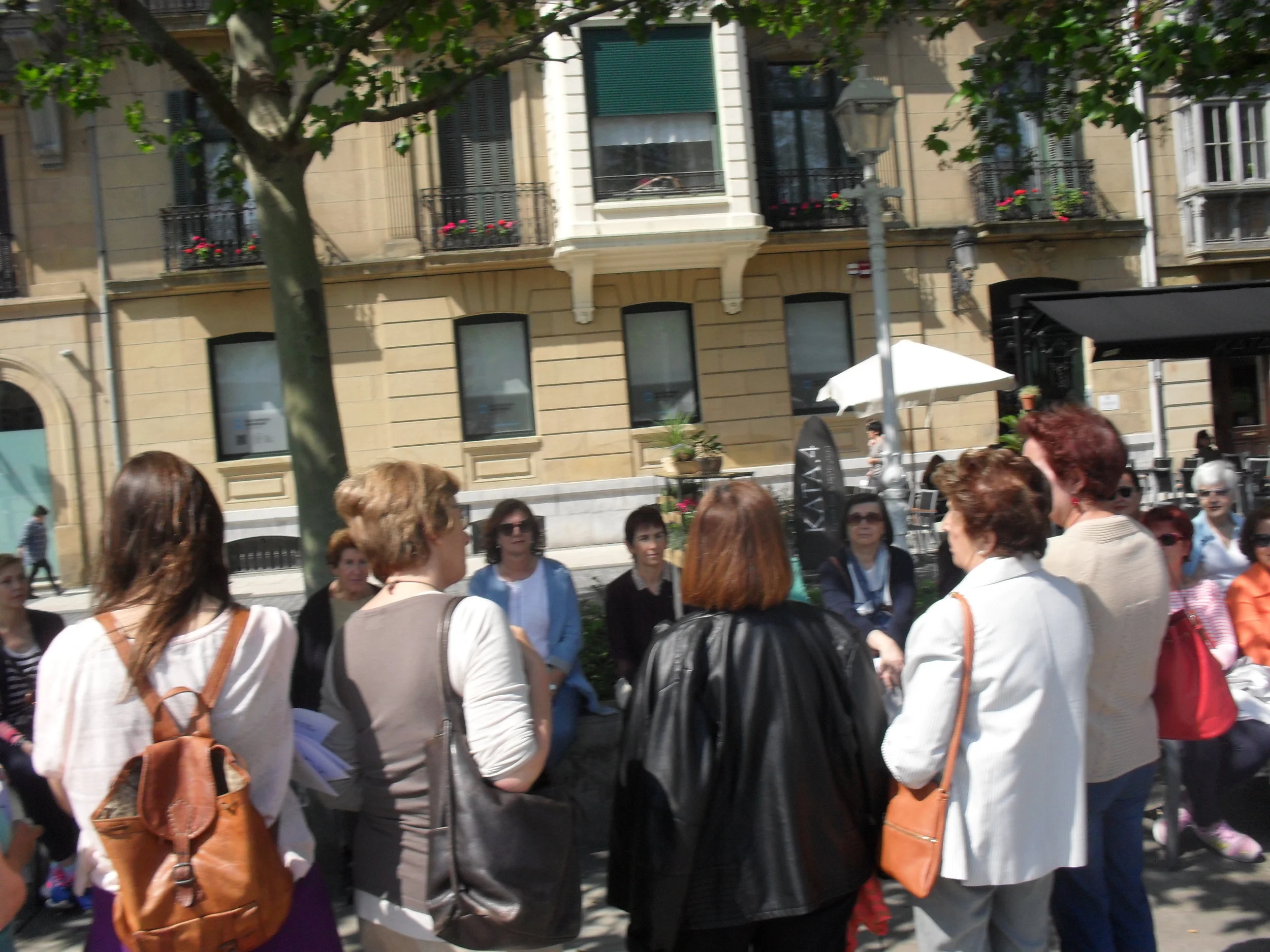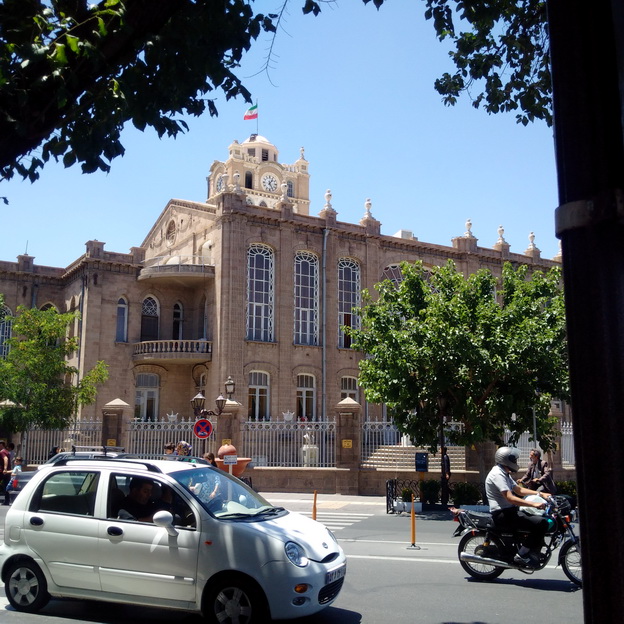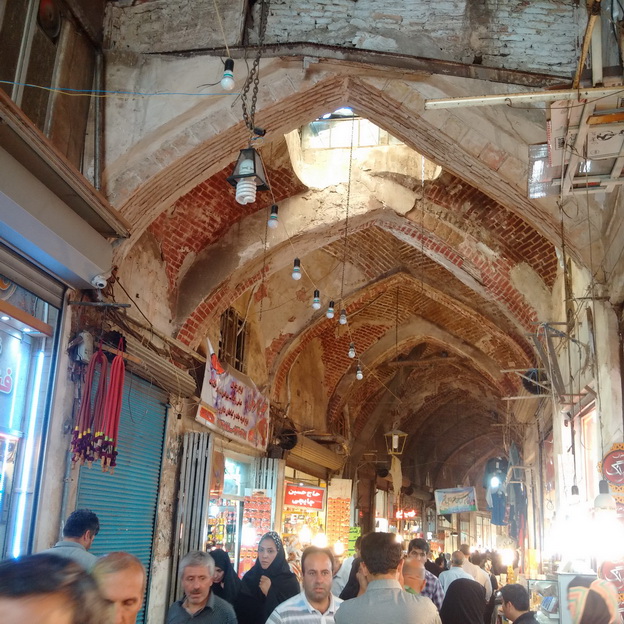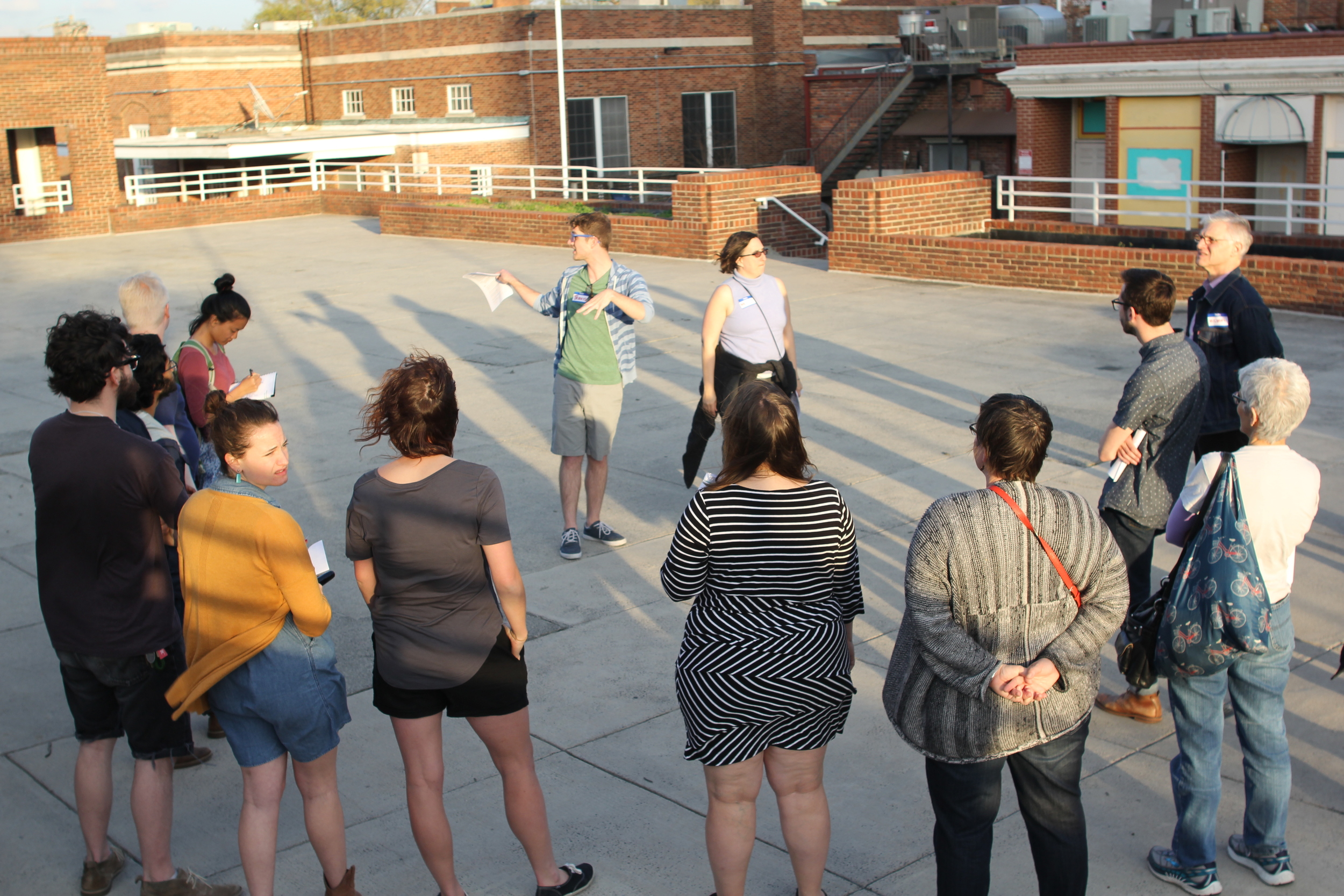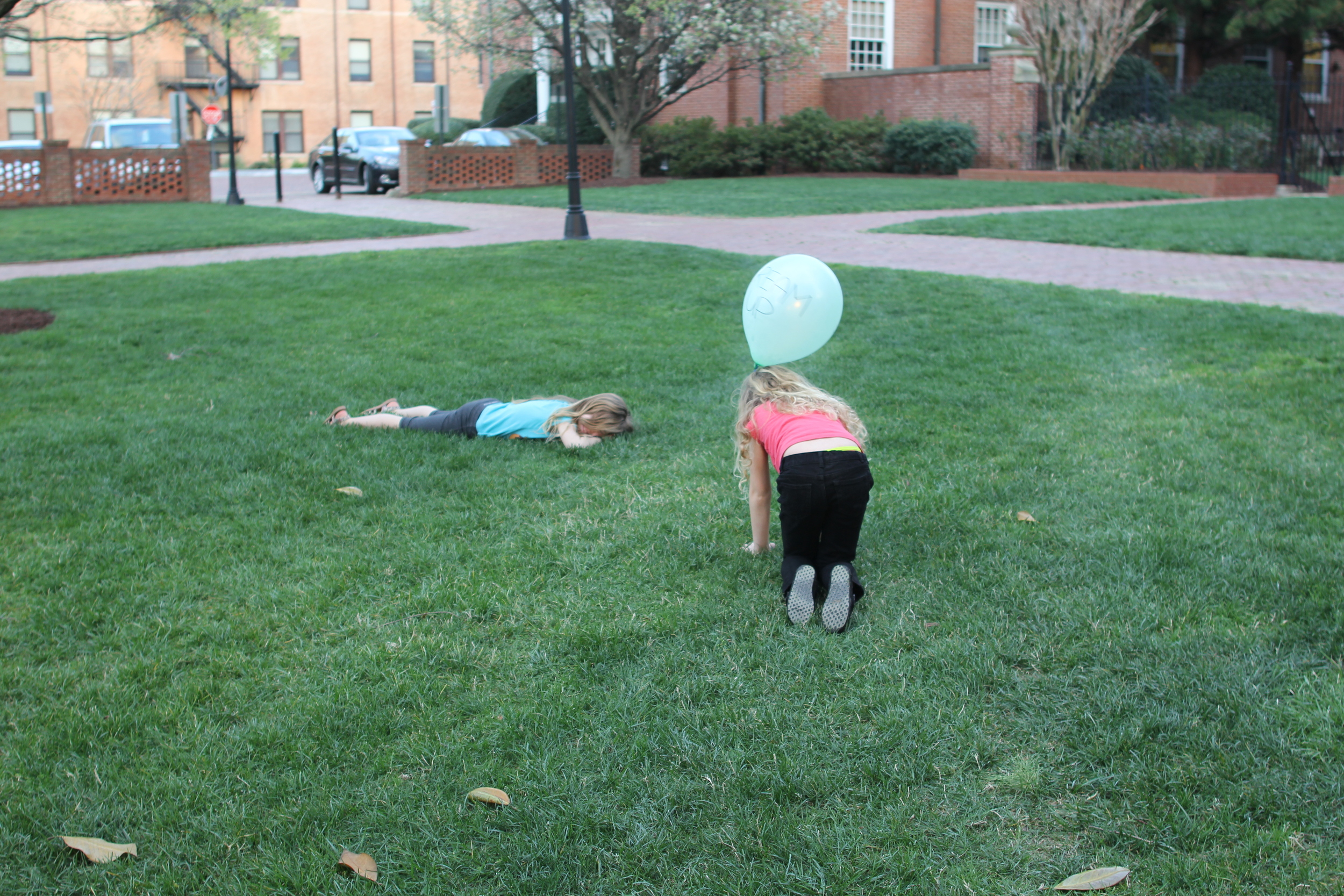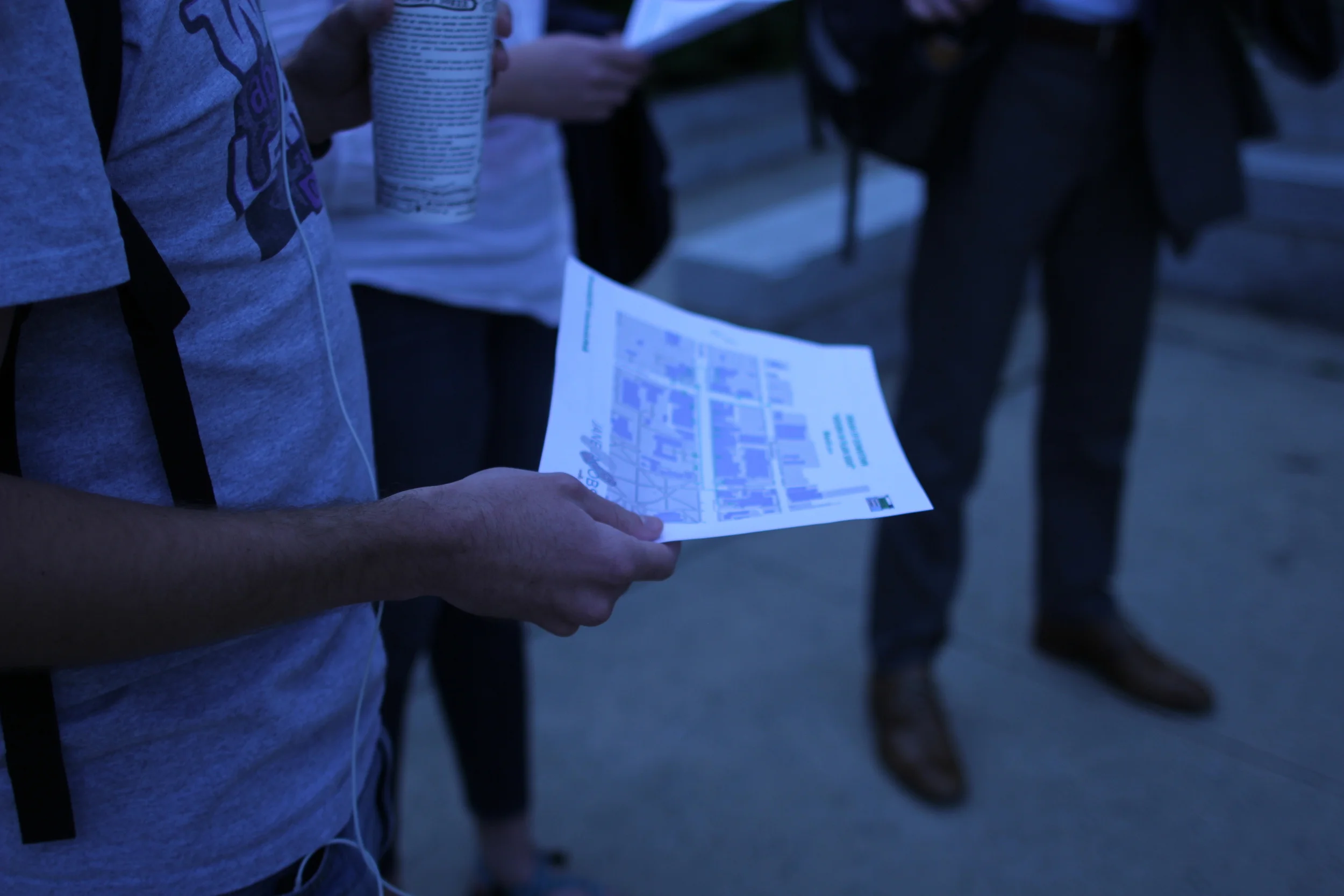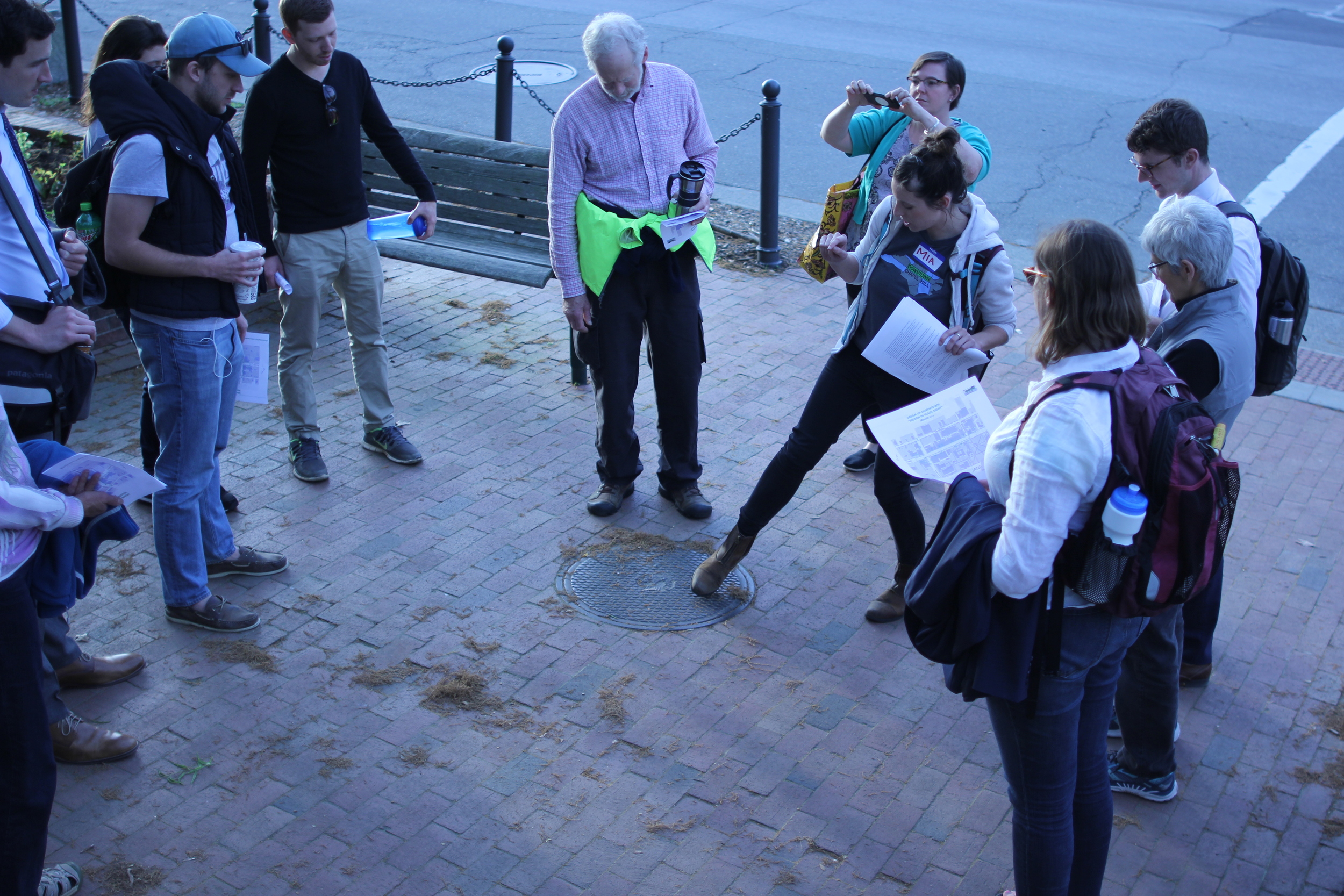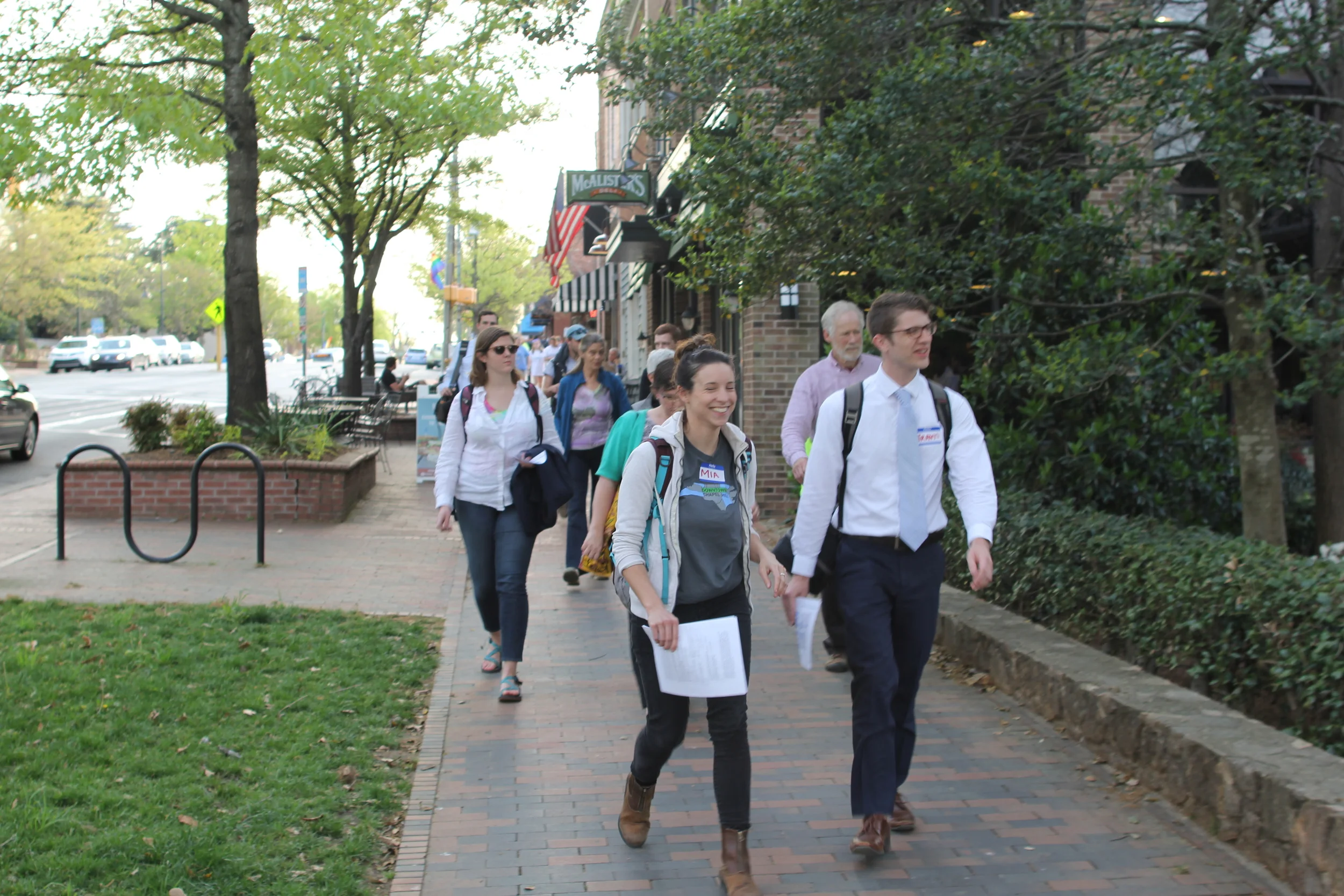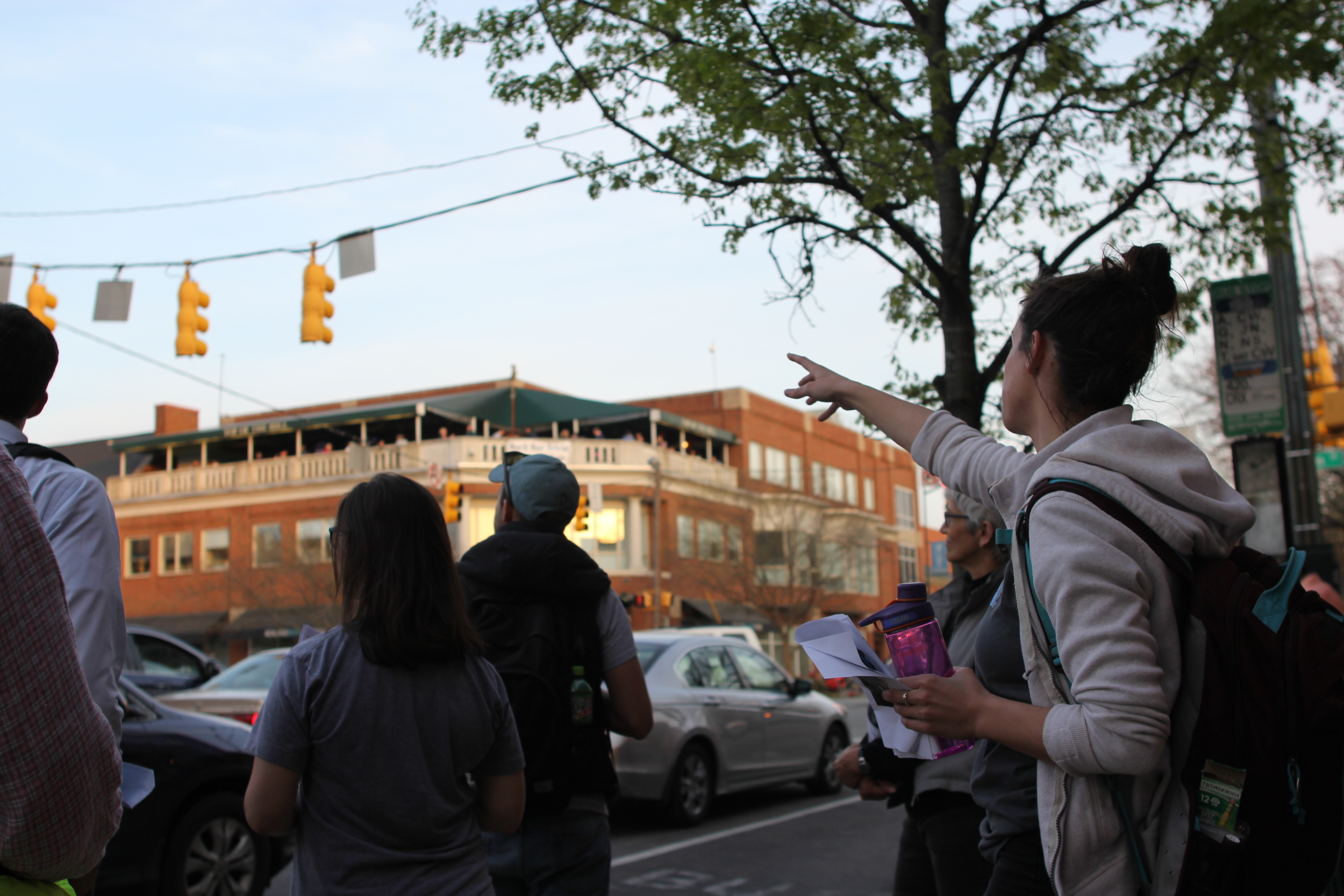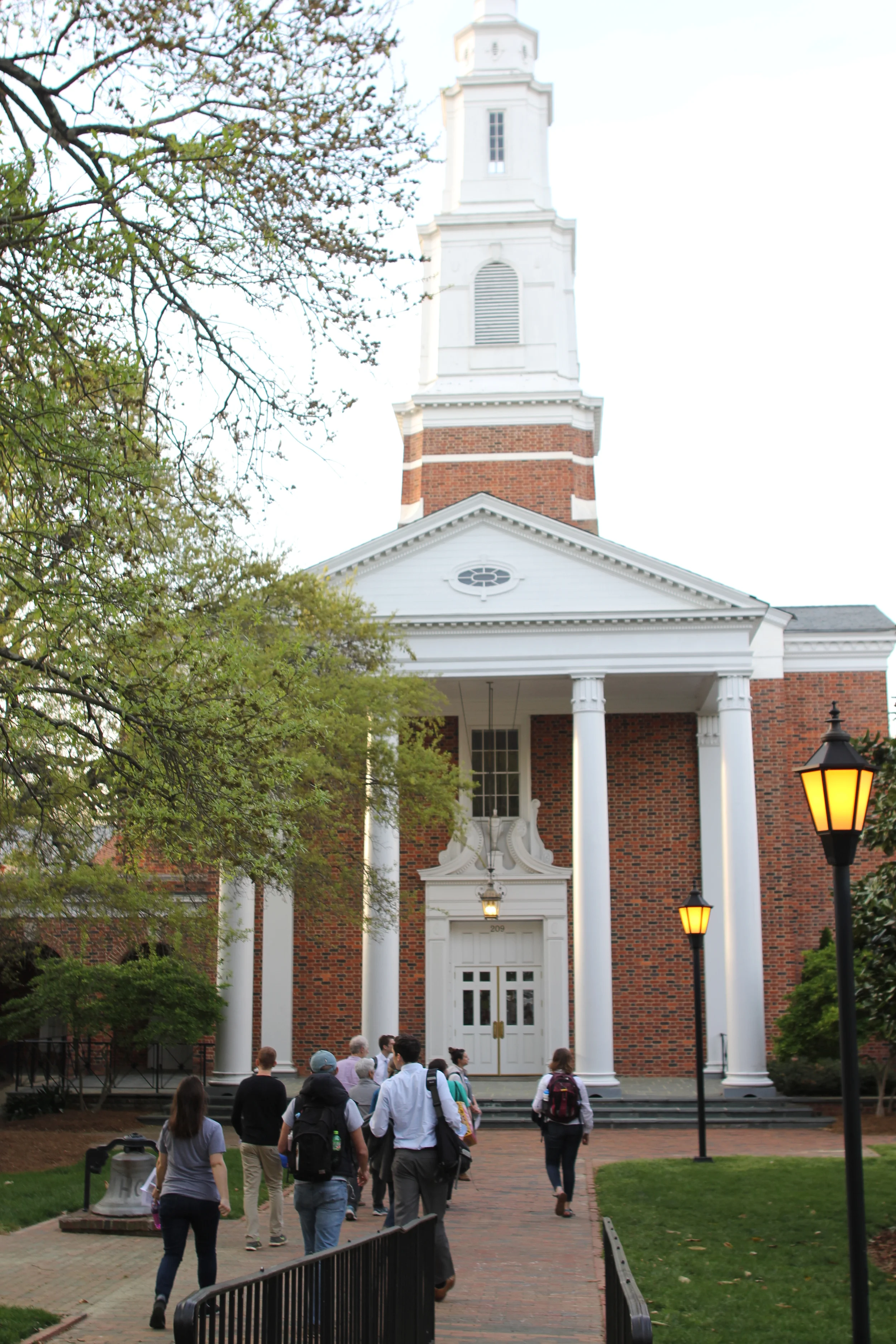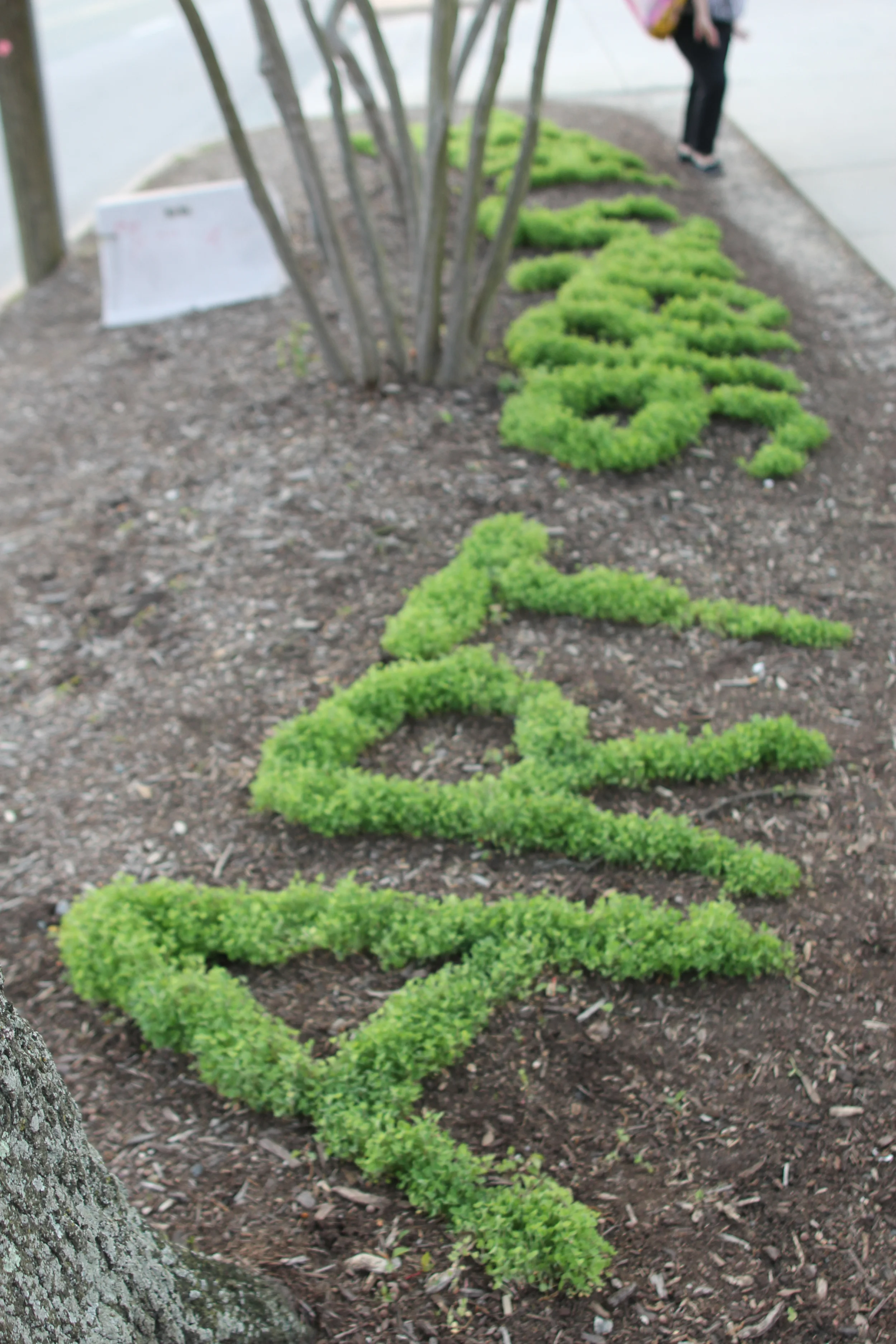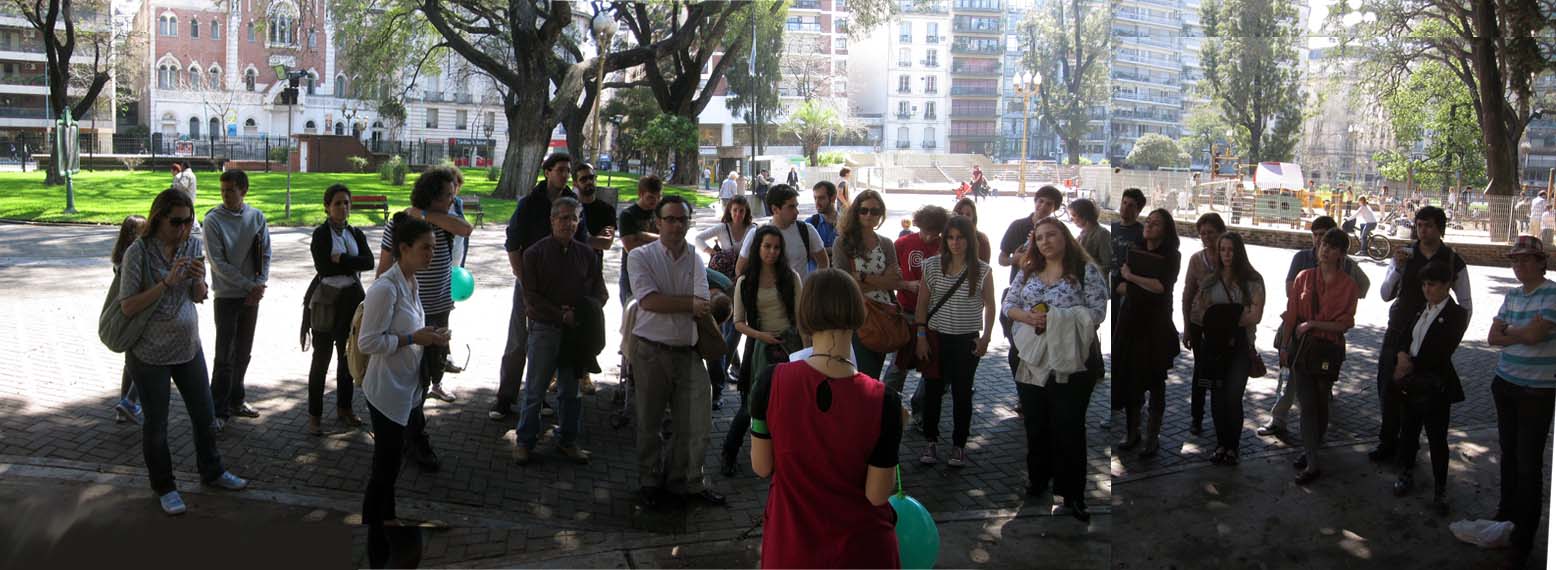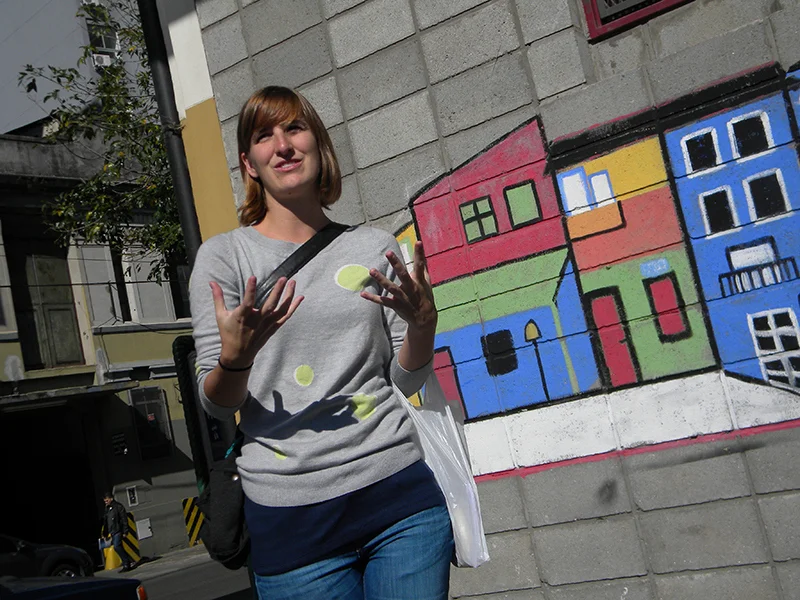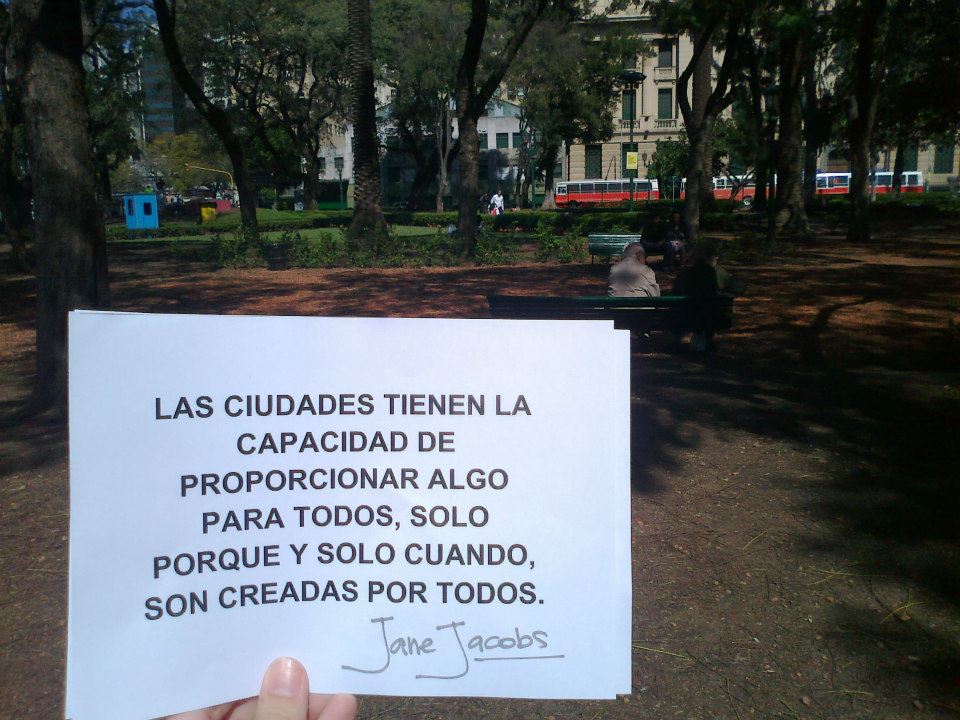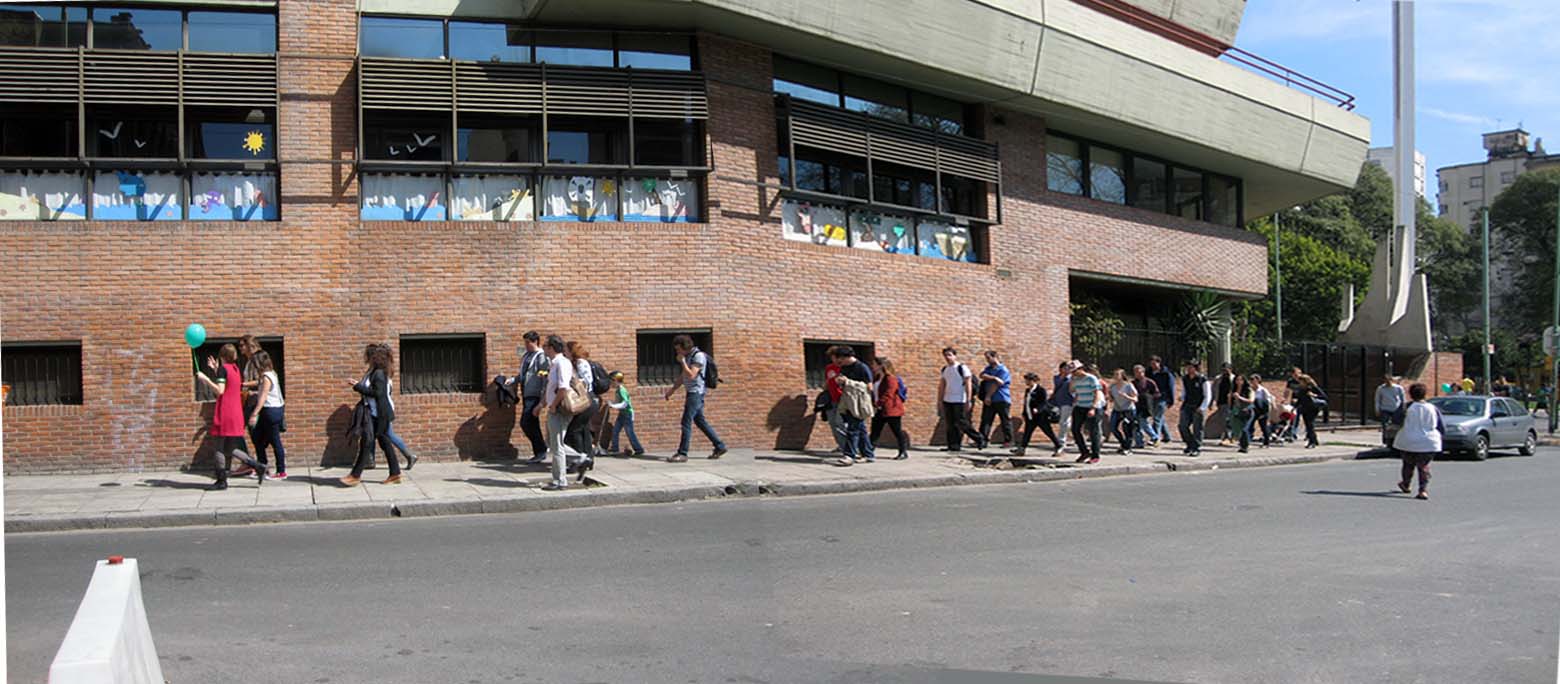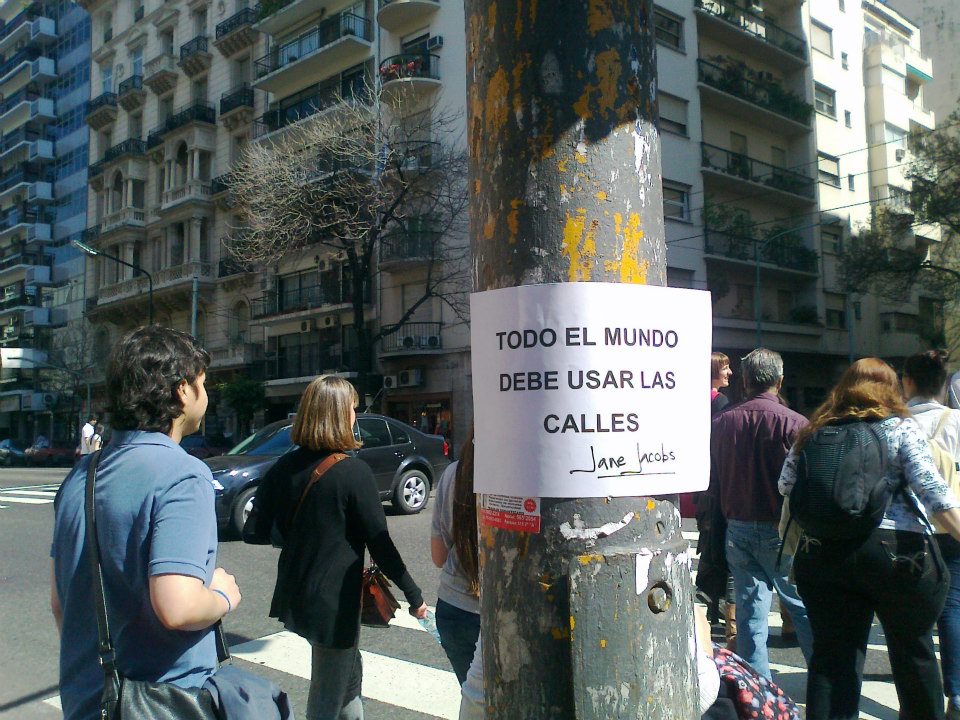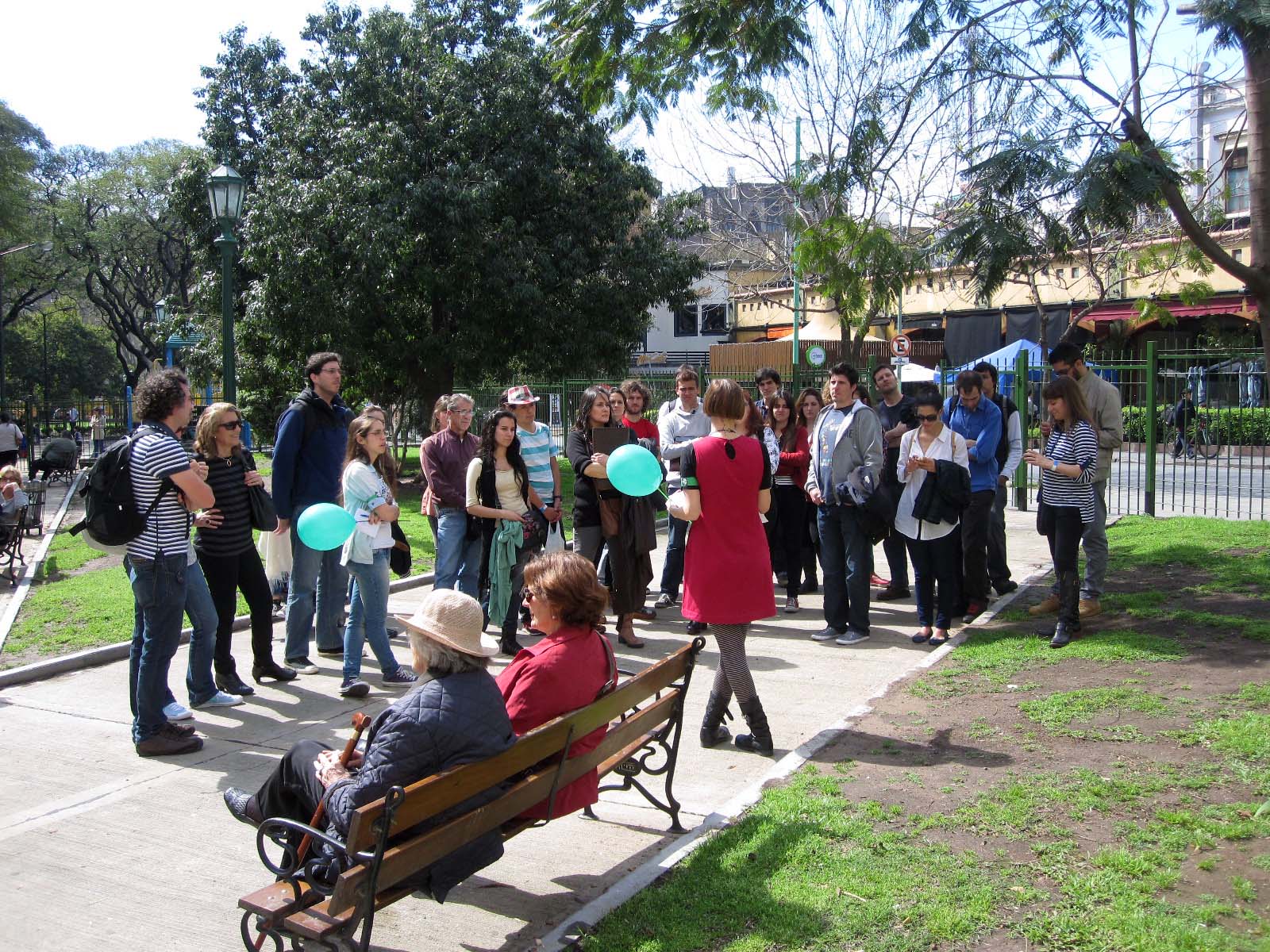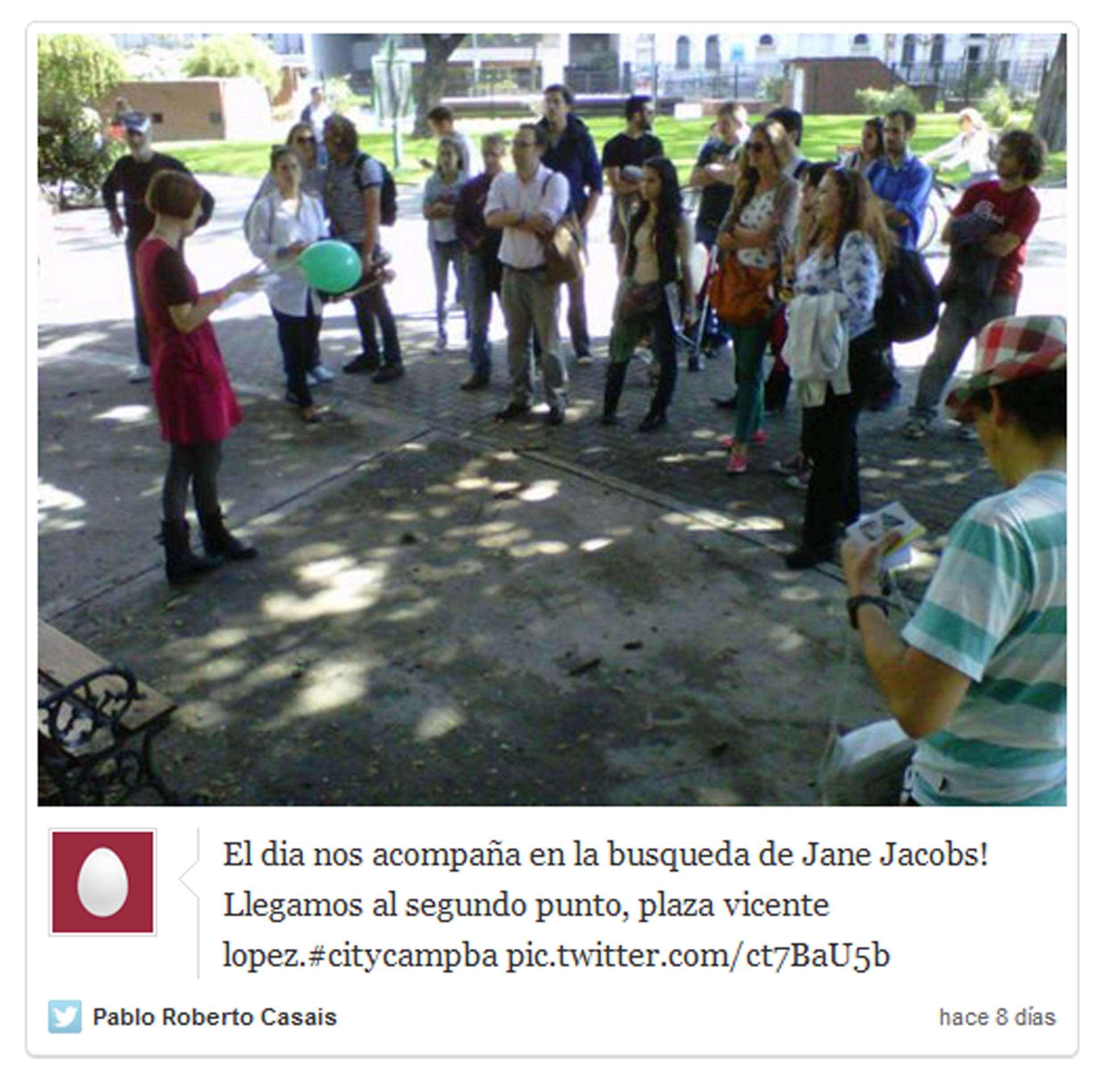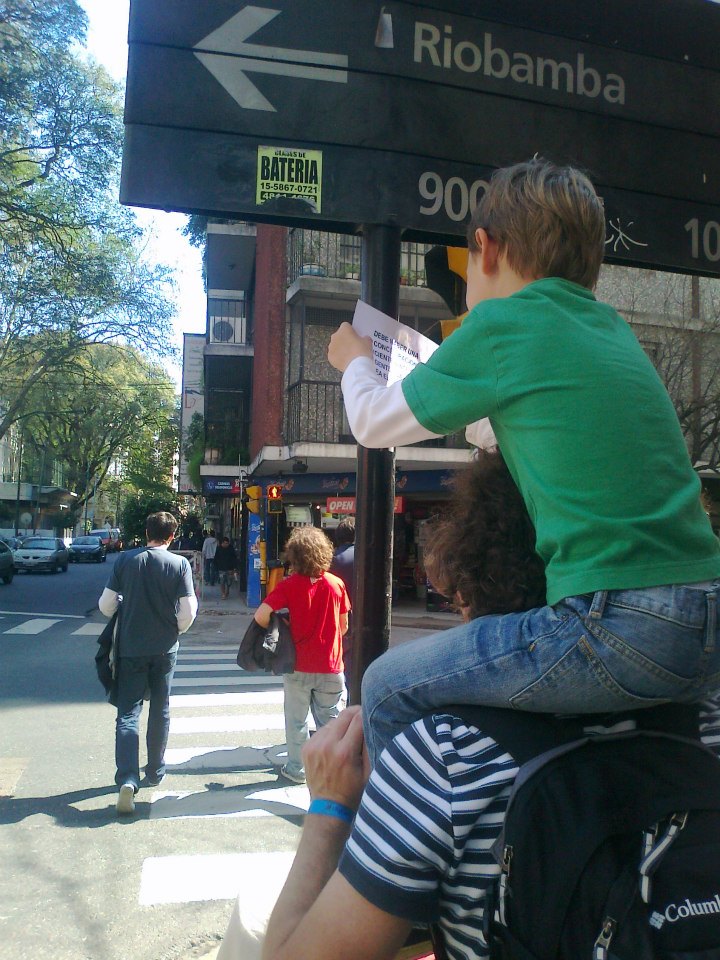On that first NP morning in the square, an expansive and three-level plaza awaited us. At the lowest of the three levels, a pool almost the length of a football field jutted out from the police station. On the bigger second level, red-gravel paths divided four rectangular lawns, which were flanked by neatly trimmed bushes, two wide sidewalks leading toward the courthouse, and plenty of park benches. Up a long set of stairs to the third level, a triangular lawn revealed a statue of Mahatma Gandhi at its apex. His eyes, weary from marching, still determinedly fixed straight down Kilbourn Avenue towards the City Hall.
Other tribe members discovered that there were indeed more entrances to the square from Wells: a parking lot and crumbling staircase on the west side of the museum beckoned them, and the front of the courthouse allowed access as well. During later workouts, we would discover that the courthouse had closed the entrance/exit from the building as a safety precaution: “Absolutely no public access allowed.”
The sunrise revealed the square’s loneliness. The dried-up pond, the litter, the sleeping bags of homeless citizens. We all left our NP blood, sweat, and tears in MacArthur Square that morning, after long sprints, box jumps and leg throwdowns, but most of us – including myself – still knew nothing about why the square existed. Did anyone use the space during the daytime? Not necessarily for sprints like we did, but even just strolling or lunching, casual meetings, or relaxing games of frisbee?
I would encounter MacArthur Square in a different way, and while wearing regular street clothes, months later. I led my first Jane’s Walk in 2017, called the Art & Justice Trail, that linked Bronzeville to Clarke Square via the James E. Groppi Unity Bridge. Among other sites along the way, the walk connected the statue of Martin Luther King Jr. in Bronzeville to the statue of Cesar Chavez in Clarke Square. At the halfway point was Gandhi, which most people on the tour had never seen.
In 2002, the Indian American community erected the beautiful Gautam Pal statue on the site and named the small triangular lawn in front of the Courthouse “India-America Friendship Park.”
It was on this tour that I first introduced the walkers to what local historian John Gurda has called “the black hole of downtown Milwaukee… sucking the energy out of its surroundings.” He further bemoaned the square as an “oversized alley, owned by no one, used by no one, loved by no one.” Other than our group of tour participants, the square was empty.
MacArthur Square was indeed what Jacobs had called an “island, in majestic isolation.”
Again, why had this happened? And what could be done to reactivate the space for public use?
When the Depression hit, no new civic center projects followed. After World War II ended, the city did name the plaza MacArthur Square to honor the general who called Milwaukee his “old hometown.” Six years later, General Douglas MacArthur himself visited the city with a great deal of pomp and circumstance. He concluded a thirty-two mile victory lap around Milwaukee with the official dedication ceremony of the square in his honor, witnessed by an attending crowd of 40,000 people.
Then, the beginning of the end arrived. The 22.5-acre square became the roof of a 1,445-spot underground parking garage. The Milwaukee Public Museum on Wells Street blocked the square from view facing north, with the Safety Building blocking it from view on the State Street side. Then the Police Administration Building was erected. Neither the Schoenleber clock tower, nor the city Christmas tree, nor the statue of MacArthur finally erected in 1979 could attract more than occasional concerts or rallies to the square.
In 1990, the clock came down because it was deemed too expensive to maintain. In 2014, MacArthur’s statue was moved to the lakefront because the square had become what Gurda called “a dead zone.”
A recent excursion also revealed a modest monument I had never seen before, dedicated to Milwaukee police officers killed in the line of duty up until 1977. It sits unceremoniously near a desiccated pool amid benches, litter, and bushes with sleeping bags tucked behind them. Thirteen more officers have died in the line of duty since 1977.
We cannot forget the recent rallies and marches that began in the square, bringing thousands to the space to fight for women’s rights on January 20 and a couple hundred to fight for marijuana legalization on May 5. But the marches came and went. Today, the 22.5-acre park is as empty as ever, except for a some geese, other wildlife. A handful of homeless individuals, some pitching tents in the middle of the lawn, others curled up in sleeping bags in the low bushes or even against the police building, are the only people who frequent the space.
On a recent Saturday afternoon, as part of Jane’s Walk MKE, I offered residents a chance to help activate the space in a seemingly new way: learning some history, then play kickball and fly kites. I encouraged anything to use the space that was available to us. The weather forecast promised spring rains but had held back, and about a dozen brave souls took a chance to join me. We had time to entertain ourselves with various forms of recreation while we waited for everyone to arrive. But as my short history stroll around the square was coming to an end, a loud thunderclap shook above us – and the rain came. Huddling under some tree cover, we agreed to reschedule and before we left, we shared last-minute ideas for how to activate MacArthur Square.
To be fair, city officials in 2006 worked with Robert Greenstreet, architect and Dean of the University of Wisconsin-Milwaukee School of Architecture and Urban Planning (SARUP), who asked Larry Witzling of the Planning and Design Institute Inc. and a University of Wisconsin-Milwaukee School of Architecture and Urban Planning graduate student, Franz Heitzer, to consider ways to transform the space. Their two-day charrette resulted in a space with commercial development and various housing options, including condominiums and Milwaukee Area Technical College dormitories.
Among other things, the proposal called for two bridges to connect Kilbourn Avenue to the park, as well as other ways to better integrate the square to the street grid. The plan eventually proposed to the city in 2009 would have redefined the park space, reducing it by almost half. But the proposal’s hope of moving the entrance to the courthouse to the east side of the building would have highlighted its usefulness.
The grand dream of Clas was stalled many times and similarly, the Greenstreet plan was put on the back burner because of the Great Recession. However, according to Greenstreet in “Creating a Town-Gown Partnership: The Milwaukee Model,” “While economic uncertainty has stalled plans for repair and therefore major redevelopment of the square, the radical thinking in the plans will provide a provocative perspective on redevelopment that will shape planning decisions at the appropriate time.”
The article, published in the 2015 book SynergiCity: Reinventing the Postindustrial City, remains hopeful that in the future city officials will not ignore innovative possibilities for public spaces.
For now, Milwaukee County is still considering costly, piecemeal plans: demolishing the Safety Building and building a ten-story Criminal Justice Center, renovating the County Courthouse, repairing the leaking parking structure that also needs an improved HVAC system. It seems time again for a holistic development plan that considers the entire courthouse complex, including the museum, police structure, the street grid, and MacArthur Square.
Like Greenstreet, I remain hopeful but only because the drenched participants in the failed kickball event imagined possibilities outside the realm of development that would cost hundreds of millions of dollars. I have no doubt that MacArthur Square and its surrounding buildings will eventually be transformed somehow, for good or for ill. What to do with the space in the meantime, remains a question with few answers.
Some suggestions saw the possibility for outdoor movies and concerts. Other ideas involved food and beverage trucks. I have wondered lately if small festivals like Fringe Fest – currently held at Pere Marquette Park in August, MKE Festival of the Arts – also slated for August, or Oktoberfest could draw attention to the square. In fact, according to their website, local restaurateurs Craig Pruscha and Hans Weissgerber III are planning to move Milwaukee’s Oktoberfest from Pere Marquette Park to MacArthur in 2018, so this could be a start.
Someone else brought up the notion of using part of the square for a downtown dog park. While Claude Krawczyk and the Downtown Neighbors Association of Milwaukee, Inc. (DNA MKE), have been trying to persuade the Bucks to create a playground and dog park on the site of the soon-to-be-torn-down Bradley Center, gathering over 300 signatures so far on their petition, just two blocks west lies MacArthur Square waiting for someone to breathe life back into it.
The site is large enough to host a dog park, a people park, a children’s park, public art, a wading pool, and more. Especially in warm months, downtown dog owners would have a space to gather. Patrons and programs of local institutions could spill out onto the square to relax or learn. A splash pool and nearby playground equipment could provide an alternative to expensive water parks for residents in nearby neighborhoods.
The dreary backside of the museum could sport a massive Wisconsin-themed mural. Stair risers could be painted to resemble beloved book spines, a tribute to the library across the street, or justice-related quotations. Permanent and traveling sculptures could also punctuate the empty space as an offshoot of the Wisconsin Avenue project. A pay-as-you-can outdoor cafe near the monument to fallen officers could provide service to an assortment of visitors. The library across the street could host outdoor summer events in the square. And the Public Museum could also seek ways to use the square during their summer camps.
As for access, without having to build expensive pedestrian bridges from Kilbourn Avenue over 7th Street, the hidden spiral staircase could be spruced up. A new coat of paint in the same color could be used as a visual merger with the sidewalk, leading from Wells Street into the park.
I talked to someone recently who even suggested a socially conscious approach, by building tiny homes on the property for the homeless. That would probably require some rezoning. But imagine if a commitment to the city’s homeless stood, as tiny homes circling a community garden, under the shadow of the courthouse emblazoned with the words “Vox Populi, Vox Dei.” The square would become a square for the people, by the people.
MacArthur’s statue was relocated four years ago. So the space could be renamed to help its image. Calling it “The People’s Square,” for example, would appoint it as the place where people gather to have their voices heard. Citizens could make the square what they want it to be, when they want it to be. A mixed-use Milwaukee agora, like the ones in ancient Athens for commerce, arts and education, athletics – like kickball and kites. Political marches could begin at “The People’s Square” and commence toward City Hall, or vice versa. Imagine any kind of use for the people, by the people.
“Downtown has had the capability of providing something for everybody only because it has been created by everybody. So it should be in the future; planners and architects have a vital contribution to make, but the citizen has a more vital one. It is his city, after all; his job is not merely to sell plans made by others, it is to get into the thick of the planning job himself.” She insists that the citizen “does not have to be a planner or an architect, or arrogate their functions, to ask the right questions:
- How can new buildings or projects capitalize on the city’s unique qualities?
- How can the city tie in its old buildings with its new ones, so that each complements the other and reinforces the quality of continuity the city should have?
- Can the new projects be tied into downtown streets?
- Does new building exploit the strong qualities of the street—or virtually obliterate the street?
- Will the new project mix all kinds of activities together, or does it mistakenly segregate them?
Let the citizens decide what end results they want, and they can adapt the rebuilding machinery to suit them. If new laws are needed, they can agitate to get them.”
– Jane Jacobs
Some of our ideas sound fantastical, some practical. Most of them will require some amounts of money. Some just require getting our collective butts into the square and using it in new ways, or urging the adjacent library and museum to consider innovative ways to activate it. The more MacArthur Square is used, the more it will become The People’s Square.
Jacobs expressed my feelings when she said, “What a wonderful challenge there is! Rarely before has the citizen had such a chance to reshape the city, and to make it the kind of city that he likes and that others will too. If this means leaving room for the incongruous, or the vulgar or the strange, that is part of the challenge, not the problem. Designing a dream city is easy; rebuilding a living one takes imagination.”



